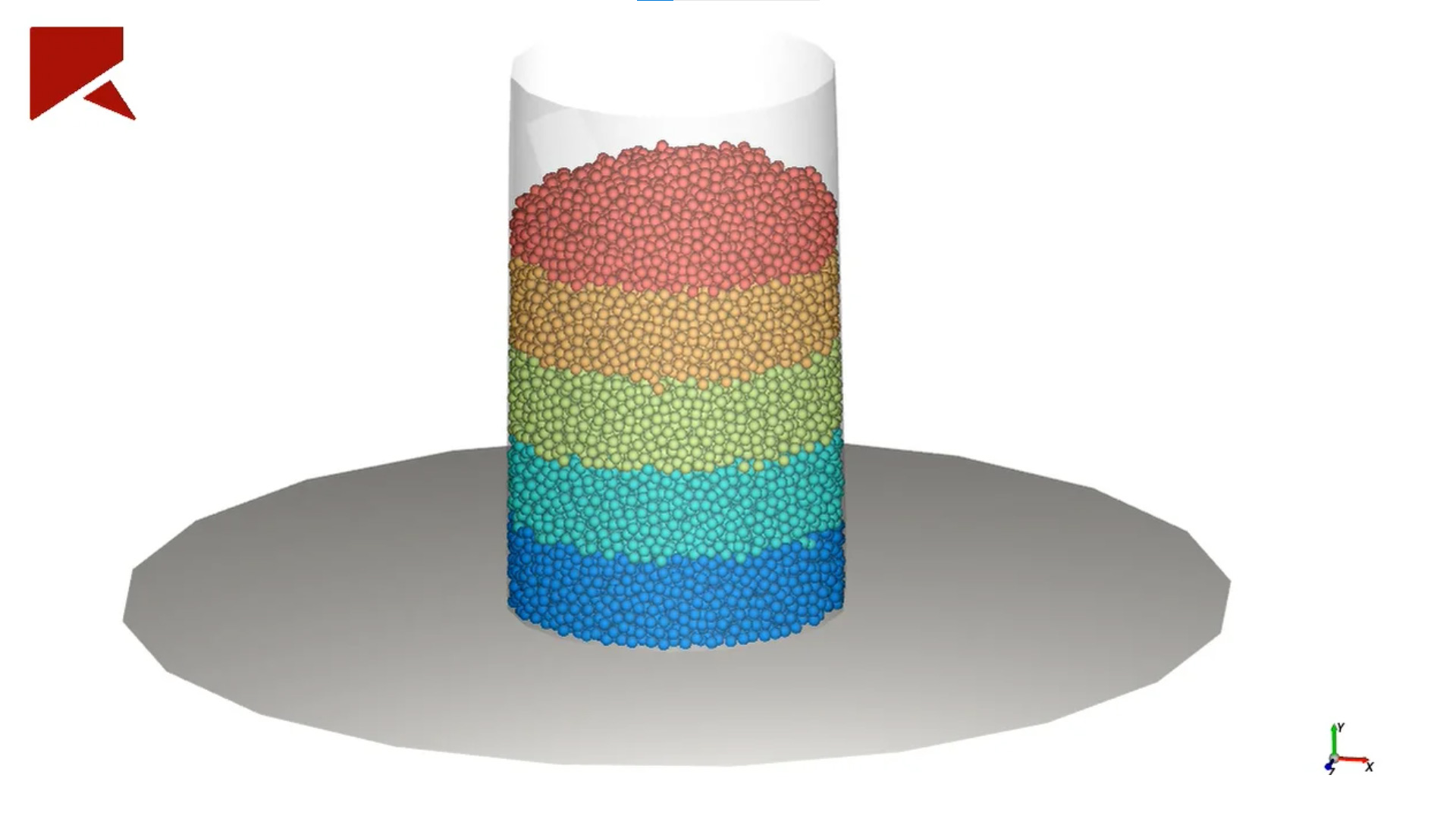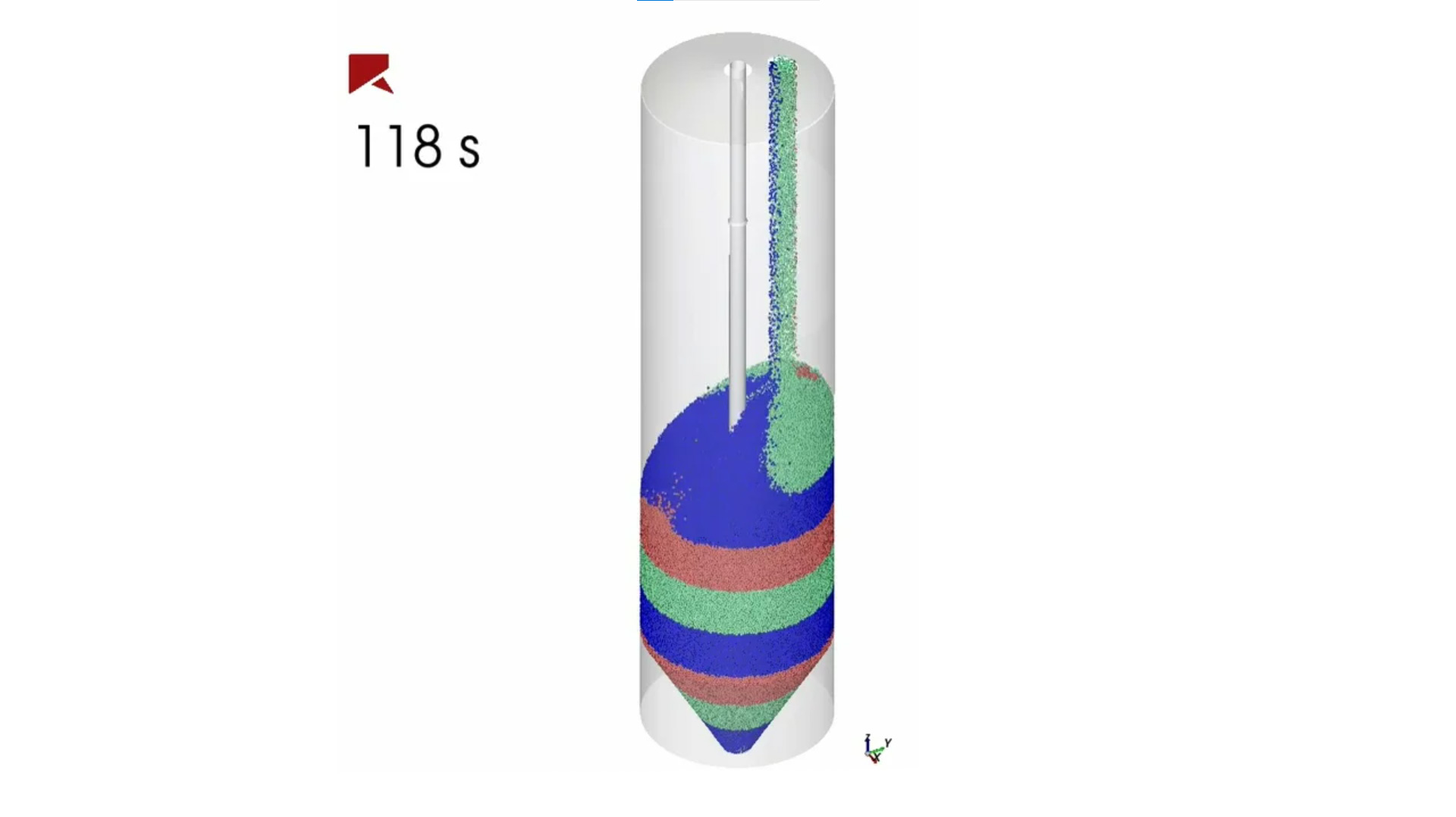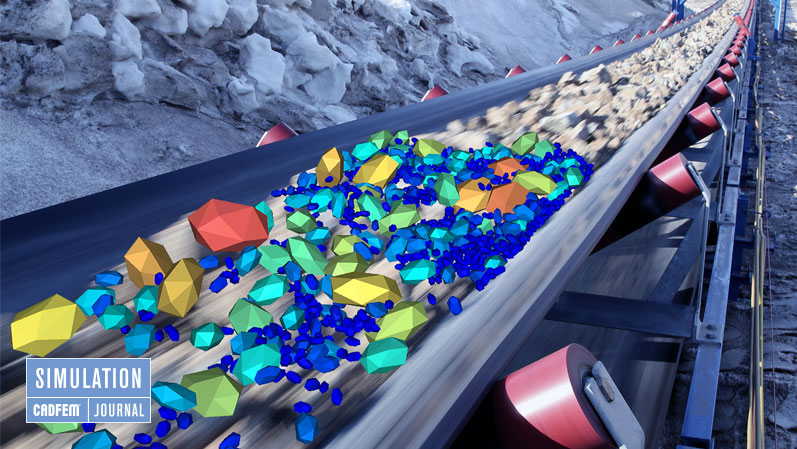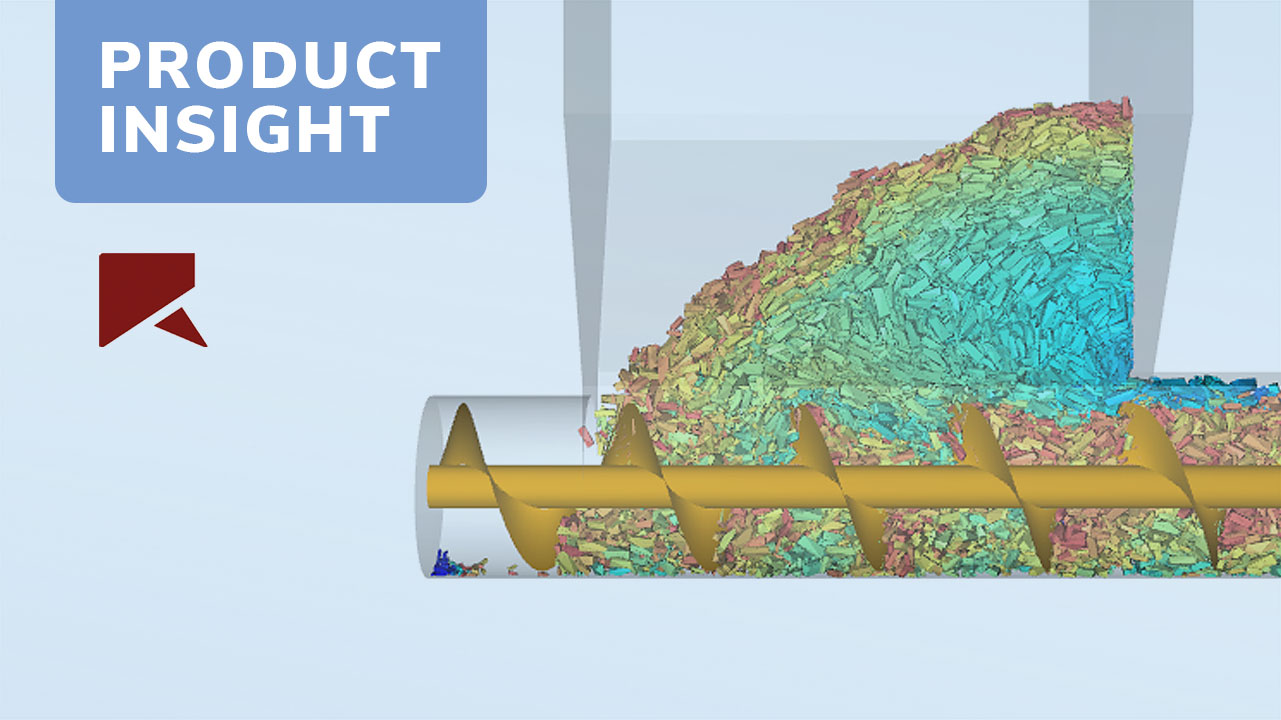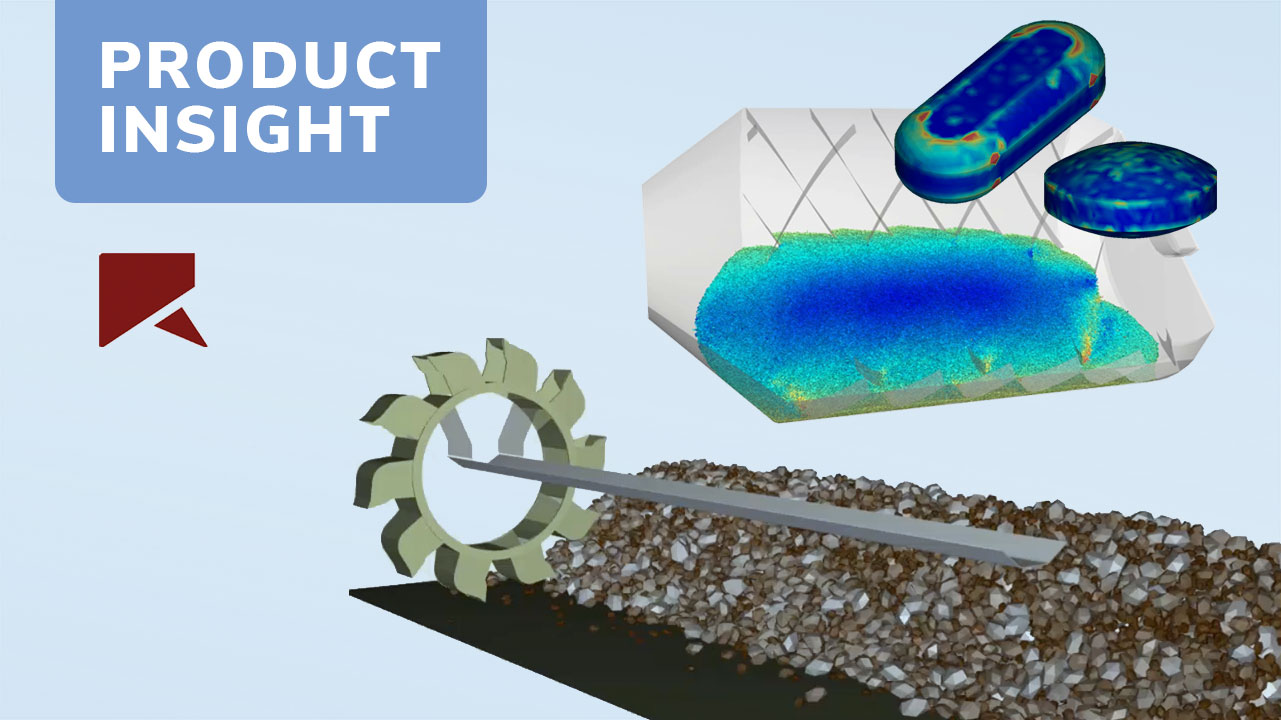Bulk material simulation saves the production of costly prototypes
Operational reliability in the silo
In mechanical process engineering, silos serve as temporary storage facilities for bulk materials. The ever-increasing demand for larger facilities results in traditional design methods, analytical or based on empirical assumptions, constantly reaching their limits. In particular, determining the internal loads of the bulk material in the silo poses problems for design engineers. Particle simulations based on the Discrete Element Method (DEM) accurately represent such processes and can provide answers to important questions.
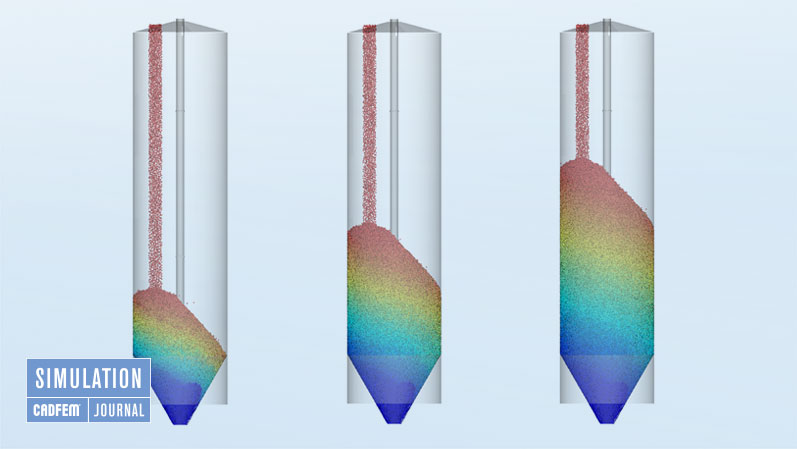
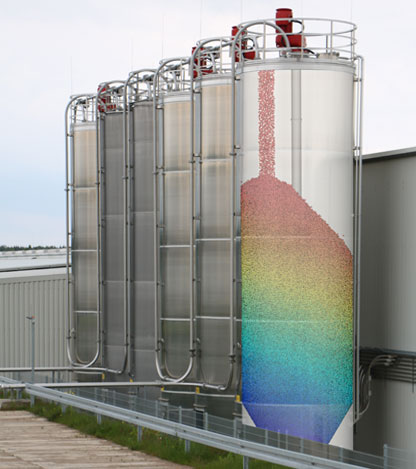
Bulk material must be reliably and economically filled into silos, stored, and, if necessary, mixed and unloaded. The special properties of the bulk material must be taken into account and targeted technical adaptations must be implemented to ensure smooth operation. An important requirement in many cases is the homogenization and even distribution of the bulk material in the silo. For this purpose, a number of blending silos are available, which can be individually adapted according to customer requirements and are continuously being optimized by the manufacturers.
Silo with mixing screw for plastic granulate
An example of the use of silos is in the plastics recycling industry, where plastics are collected, washed, shredded, dusted off, and fed into to an extruder as ground material. In this specific case, the inhomogeneous shredded plastic granulate should be homogenized and evenly distributed in a silo with a mixing screw. The silo was made of high-quality aluminum by the company Eichholz Silo- und Anlagenbau. The desired screw drive from below had previously only been used by the silo specialists for smaller plants. It was therefore important during the design phase to specify the maximum deflection of the more than 15 meter long, thin-walled stainless steel screw conveyer and the supports in such a way that excessive deflection, and thus risk of damage to the drive shaft, cannot occur.
About Eichholz Silo- und Anlagenbau
Eichholz Silo- und Anlagenbau GmbH is a medium-sized family business that, with around 70 employees, has been implementing silos and user-specific complete systems for handling bulk materials for more than 50 years. The portfolio includes mixing silos with mixing screws, mixing pipes and mixing cones. These are built in many variants and combinations for a wide range of customer requirements and bulk materials. Over the years, Eichholz has developed into a specialist company for the manufacture of aluminum and stainless steel silos and a supplier of bulk materials.
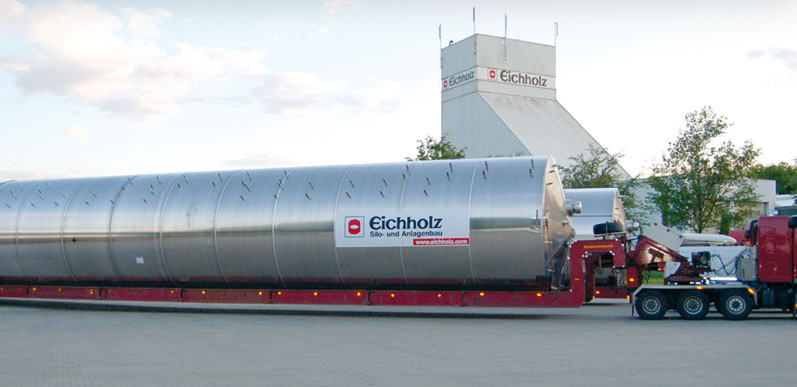
The special challenge was that the screw is centered and therefore the silo inlet must be eccentric, which leads to an uneven load on the screw conveyer - especially during the filling process. For such scenarios, there are no standardized load assumptions and no standards with which an operationally reliable design can be created. The Eichholz company therefore commissioned CADFEM’s computation experts to use simulations to provide the necessary answers to the design engineers’ questions. With simulation, the load and deflection of the pipe could be identified and compared for different design variants and load cases in order to determine the correct dimensioning of the components and thus ensure safe operation at all times.
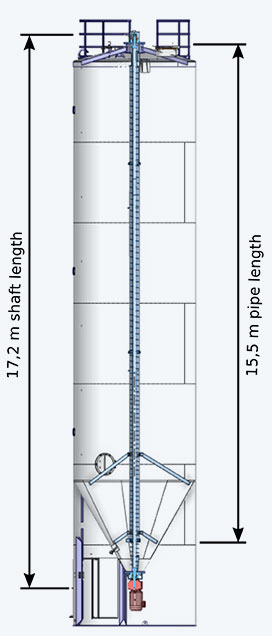
Challenges in the construction of the mixing silo
- Mixing screw is particularly long (17.2 m).
- The stainless steel screw conveyer (encases the screw for better conveying / mixing) is also very long (15.5 m) with only 5 mm wall thickness.
- Since the screw is centered, the inlet is only possible eccentrically, resulting in uneven loads and deflections.
- There are no load assumptions or standards available to consult for this scenario.
- There is an air gap of 20 mm between the screw and the pipe, which must be maintained even under the most unfavorable conditions so that the screw does not rub against the pipe.
Image: Silo with screw conveyer and eccentric inlet
Use of simulation in the design process
In a first step, the target quantities, input parameters and scenarios to be examined were agreed upon between all project participants. This was followed by the analysis of the bulk material and the material calibration required for the particle simulation. Important parameters include, for example, the coefficient of friction of the bulk material, which can be determined using the bulk material angle and the bulk density. With the 3D CAD data of the silo's geometry provided by Eichholz, digital models could be created in order to subsequently perform the desired simulations. In this specific case, the dynamic interaction between the bulk material and the components was analyzed using Rocky DEM software (DEM - Discrete Element Method), and the mechanical loading of the components was calculated using Ansys Mechanical (FEM - Finite Element Method).

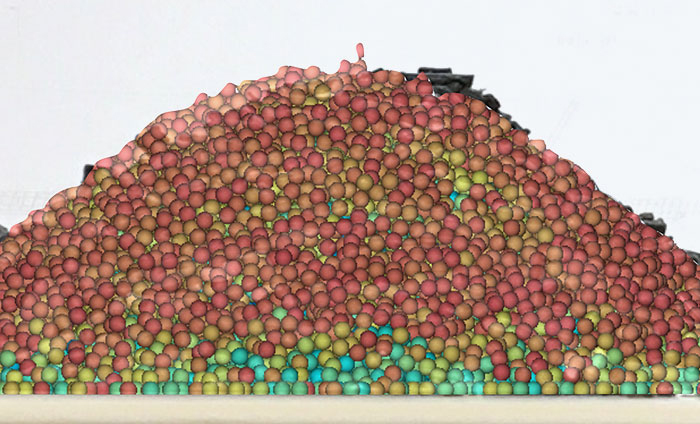
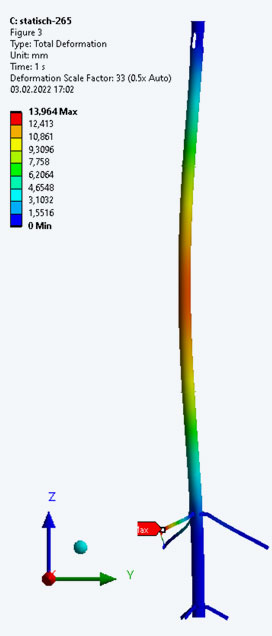
Filling process and deformations of the screw conveyer
The filling process was simulated with a maximum number of 1.3 million particles (DEM), with the particle dynamics being reproduced in a physically correct manner using a scaling model. For each filling level, the static bulk angle was set with a settlement simulation of the material and the movement of the bulk material came to a standstill. Subsequently, the critical load points and static loads could be determined for the different fill levels. These results were imported into Ansys and further processed so that the stresses and deformations of the screw conveyer could be identified. In addition, the loads determined were sent to Dr. Ing. Grote, structural engineer, who was able to include the simulated loads in his design.
Based on these results, the fastening of the screw conveyer could be correctly dimensioned and positioned so that the deflection of the pipe did not affect the shaft at any time. This also applies to the dynamic filling and discharge process. Due to the use of a mixing screw, the discharge of the silo takes place very evenly. Consequently, the discharge process, which also takes place eccentrically, has no influence on the static loads on the screw conveyer and is therefore not critical.
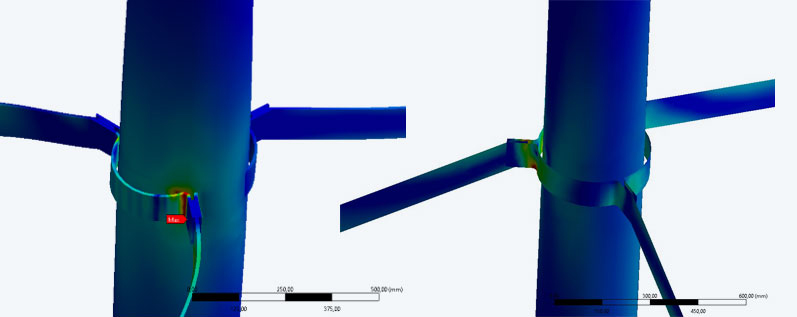
Advantages of simulation and added value for users
The FEM calculations based on the DEM simulation results also showed that the sheet metal thickness of the upper support was too small and therefore the fastening ring would not withstand the load. The material thickness of the ring had to be increased from 8 to 12 mm, which led to a halving of the local stresses. If the design adjustment had been made without simulations, Eichholz would have had to test the behavior of the silo by building an expensive prototype. This trial-and-error method would have required a lot of additional time. With simulations (along with close cooperation between Eichholz, Grote GmbH, and the simulation specialists of CADFEM), costs could be saved and the Eichholz customer was able to put all silos into operation more quickly.

Eichholz Silo- und Anlagenbau GmbH
www.eichholz.com
Authors: Jan-Philipp Fürstenau, Gerhard Friederici (CADFEM Germany GmbH)
Images: © Eichholz, except header image right: © CADFEM
Published: June, 2022
Kontakt CADFEM




